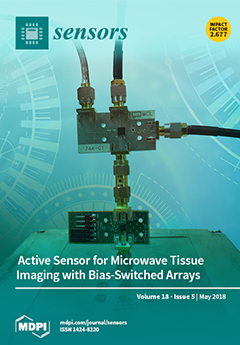Open AccessArticle
Real-Time Large-Scale Dense Mapping with Surfels
by
Xingyin Fu 1,2,3,4,*, Feng Zhu 1,3,4, Qingxiao Wu 1,3,4, Yunlei Sun 1,2,3,4, Rongrong Lu 1,2,3,4 and Ruigang Yang 5,6
1
Shenyang Institute of Automation, Chinese Academy of Sciences, Shenyang 110016, China
2
University of Chinese Academy of Sciences, Beijing 100049, China
3
Key Laboratory of Opto-Electronic Information Processing, CAS, Shenyang 110016, China
4
The Key Lab of Image Understanding and Computer Vision, Shenyang 110016, China
5
Baidu Inc., Beijing 100193, China
6
National Engineering Laboratory of Deep Learning Technology and Application, Beijing 100193, China
Cited by 11 | Viewed by 6503
Abstract
Real-time dense mapping systems have been developed since the birth of consumer RGB-D cameras. Currently, there are two commonly used models in dense mapping systems: truncated signed distance function (TSDF) and surfel. The state-of-the-art dense mapping systems usually work fine with small-sized regions.
[...] Read more.
Real-time dense mapping systems have been developed since the birth of consumer RGB-D cameras. Currently, there are two commonly used models in dense mapping systems: truncated signed distance function (TSDF) and surfel. The state-of-the-art dense mapping systems usually work fine with small-sized regions. The generated dense surface may be unsatisfactory around the loop closures when the system tracking drift grows large. In addition, the efficiency of the system with surfel model slows down when the number of the model points in the map becomes large. In this paper, we propose to use two maps in the dense mapping system. The RGB-D images are integrated into a local surfel map. The old surfels that reconstructed in former times and far away from the camera frustum are moved from the local map to the global map. The updated surfels in the local map when every frame arrives are kept bounded. Therefore, in our system, the scene that can be reconstructed is very large, and the frame rate of our system remains high. We detect loop closures and optimize the pose graph to distribute system tracking drift. The positions and normals of the surfels in the map are also corrected using an embedded deformation graph so that they are consistent with the updated poses. In order to deal with large surface deformations, we propose a new method for constructing constraints with system trajectories and loop closure keyframes. The proposed new method stabilizes large-scale surface deformation. Experimental results show that our novel system behaves better than the prior state-of-the-art dense mapping systems.
Full article
►▼
Show Figures






